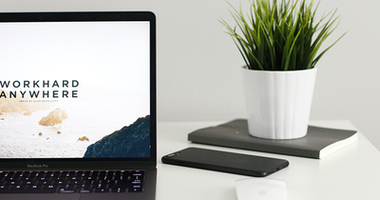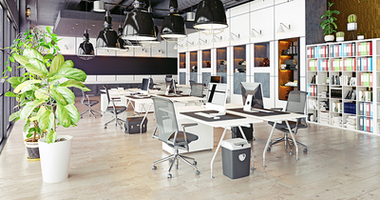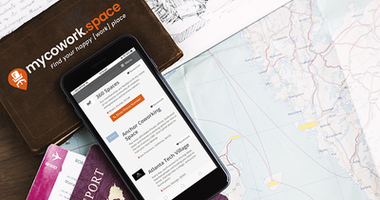
Coworking spaces are havens of productivity. Entrepreneurs and remote workers find solace in the fact that a coworking space is more than just a place to utilize a hot desk; it is a community.
Coworkers, unfortunately, are often disgruntled by the ignorance of owners of coworking spaces.
Good managers of coworking spaces should leave no stone unturned and avoid these common mistakes.
Mistake #1: Ignoring the needs of introverts.
Sure, a coworking space is built on the premise of community. There should be opportunities for coworkers to mingle in communal spaces.
However, the layout of the coworking hub should create clear separation between private hot desks and more open mingling spaces.
It is not uncommon for open mingling spaces to meld seamlessly with hot desks.
Consequently, anyone working at a hot desk will hear the commotion and activity that is characteristic of communal spaces.
Introverts, especially, will become uncomfortable with this invasion into their space. In fact, anyone working in those areas who need a distraction free environment will find it difficult to concentrate.
There are some coworking spaces that have private hot desks.
However, these must be booked in advance and may often be booked out and require payment of an additional fee.
Introverts who want to get away from the hectic, high-energy environment of the general coworking space will, therefore, be at a tremendous disadvantage.
The Solution
The floor plan of a coworking space should have a clear distinction between the communal spaces and hot desks.
A possibility for two story coworking spaces, for instance, could be to have the communal spaces and meeting rooms on the first floor and the hot desks and private rooms on the second floor or vice versa.
Another option that could work for single story coworking spaces is using a soundproof room for communal areas.
Mistake #2: Poorly managed events.
Coworking spaces already have space constraints.
Events held at a coworking space should, therefore, respect the users of the space and the limited space available.
Members of the coworking space will find events to be a nuisance if they’re trying to get work done or don’t have access to the building because of the event.
The Solution
One of the best solutions is to limit the number of events hosted and host them on days that typically have the least number of people working in the space.
Doing this allows coworking space owners to close the space to members for short period of time without terribly inconveniencing them.
The few members who would usually come at the time at the event won’t mind sacrificing that time once or twice per month.
Mistake #3: Smelling like a kitchen.
Some coworking spaces offer meals and eating areas.
However, limited space often means that there is limited separation between the kitchen and eating areas and the rest of the coworking space.
Coworking space owners must pay close attention to this if they plan to include a food area; people don’t like the smell of food messing with their productivity.
The Solution
Again, it is all about design.
There must be clear separation between the kitchen/ eating area and the rest of the coworking space.
This may mean having it in an add-on building or shop space.
Mistake #4: Infrequent cleaning.
Members of coworking spaces are not necessarily the cleanest people.
In fact, high-traffic coworking spaces can become very messy.
Hot desks, meeting rooms, bathrooms, coffee nooks and eating areas can become pig sties if not cleaned regularly.
The Solution
All coworking spaces should have cleaning staff.
These staff members work throughout the day to keep the entire space clean.
There should be a cleaning schedule and the manager should hold the staff accountable.
Mistake #5: Offering inflexible packages.
Some coworkers are not interested in long-term commitments for using a coworking space.
However, some coworking spaces lock members into monthly commitments from the get-go.
Additionally, some coworking spaces are only open on weekdays during normal work hours which puts coworkers who have full-time jobs at a disadvantage.
The Solution
Coworking spaces should offer diverse member packages.
There should be a daily pass, weekly pass, weekend-only pass, evening pass and monthly pass.
Such diversity makes a coworking space more attractive.
Furthermore, coworking space owners should not rent or lease spaces that have time restrictions.
A coworking space should be open 24/7 to meet the needs of various members.
This also means investing in a security system that always protects members.
Mistake #6: Forgetting that coffee is a coworker’s best friend.
Coffee is a staple of any office space.
However, it can become a negative for a coworking space if it never tastes good and the coffee machine makes a lot of noise in the coworking space.
Some coworking spaces may choose to create a small coffee shop beside the coworking space, but this can also be a distraction especially if there are a lot of outside people coming in.
A small coffee shop can also be expensive to maintain.
The Solution
There should be a coffee alcove in a coworking space that is far enough from the main areas of productivity but close enough to encourage mingling and collaboration.
It is worth investing in a high-quality coffee machine and offer good coffee.
The machine can be once where members must purchase tokens so that the coworking space can maintain the quality members desire.
Good Coworking Spaces Exist
Mycowork.space has a comprehensive list of some of the best coworking spaces in the world.
Most of these coworking spaces check all the boxes that relate to providing a productive coworking space void of the common mistakes mentioned in this article.
Check out the list to find a coworking space near you.
Share Your Experiences
Feel free to discuss your coworking journey with spaces that have got it right, or not.
Last updated: August 5, 2019





